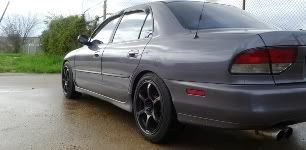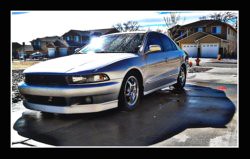Some more info on air losses
2.25" O.D. straight tubing: 0.17 psi per foot
2.5" O.D. straight tubing: 0.10 psi per foot
3" O.D. straight tubing: .04 psi per foot
2.25" O.D. 90* bend: 0.27 psi per bend
2.5" O.D. 90* bend: 0.17 psi per bend
3" O.D. 90* bend: .08 psi per bend
So having the shortest route from the turbo to the throttle body will equal more psi at the intake manifold
 Log in
Log in Register
Register







 Reply With Quote
Reply With Quote
 2000 Mitsubishi Galant ES
2000 Mitsubishi Galant ES



 1997 Mitsubishi Galant DE
1997 Mitsubishi Galant DE










Bookmarks